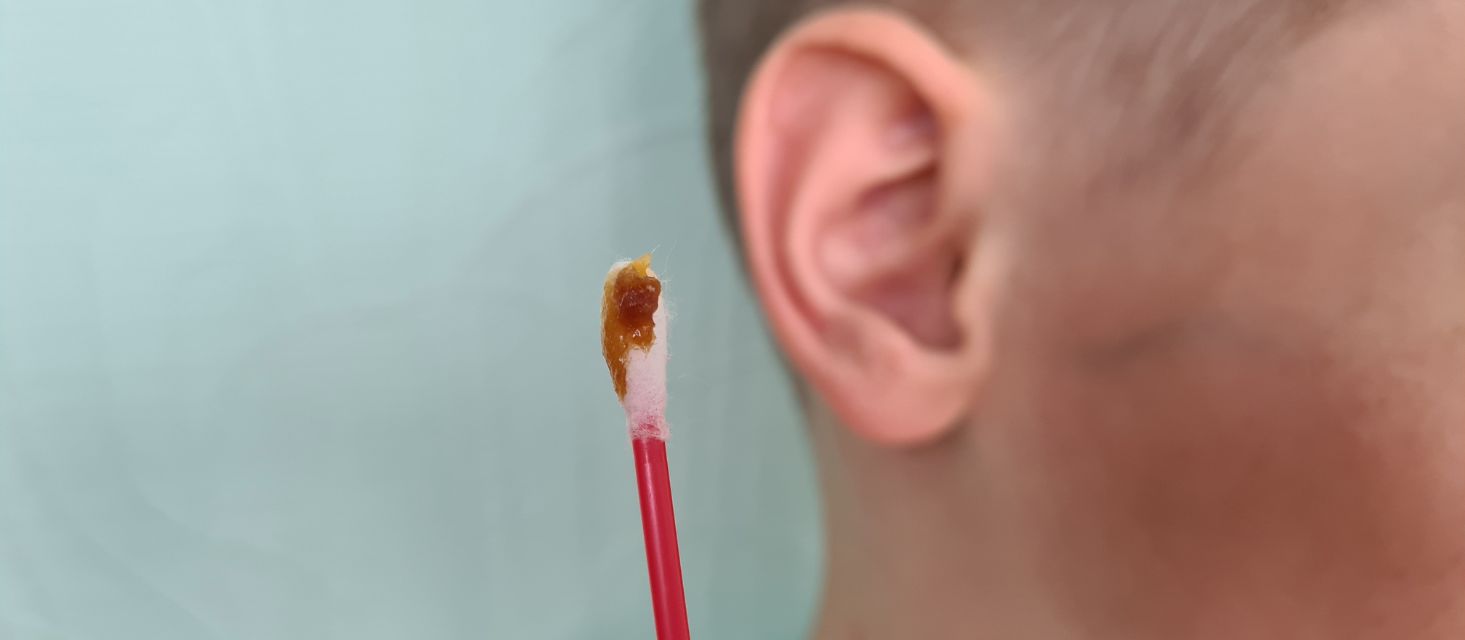Earwax, also known as cerumen, is a natural substance produced by your body to protect and clean the ear canal. Though often overlooked, earwax plays a crucial role in maintaining ear health. This page will study the origins of earwax, how it's produced, its functions, and why it’s vital to your ear health.
What is Ear Wax?
Earwax is a yellowish-brown, waxy substance secreted by glands in the ear canal. It serves multiple essential functions, such as protecting the ear from dirt, bacteria, and insects. It also helps moisturise the ear canal, preventing dryness and irritation. The production of earwax is a completely natural process and, despite its sometimes unpleasant appearance or feel, earwax is essential for maintaining a healthy ear.
How is Earwax Produced?
Earwax is produced by two types of glands in the ear canal: ceruminous glands and sebaceous glands. The ceruminous glands secrete a sticky, waxy substance, while the sebaceous glands release oil. The combination of these two substances forms earwax, or cerumen.
The ear canal is lined with hair follicles that trap dust, dirt, and other foreign particles. As earwax is produced, it moves slowly towards the outer ear, carrying with it the trapped debris, dead skin cells, and other materials. Over time, the earwax dries out and eventually falls out or is washed away during normal activities such as showering or cleaning the outer ear.
Where Does Ear Wax Come From?
The production of earwax begins deep within the ear canal. Specialised glands in the skin of your ear canal secrete cerumen, which mixes with oils from sebaceous glands to form earwax. This process is continuous, with the earwax gradually moving from the inner ear towards the outer ear, where it eventually dries and falls away or is naturally expelled.
The amount of earwax produced varies from person to person. Some individuals naturally produce more earwax, while others produce less. Factors such as genetics, environment, and hygiene practices can all influence the amount of earwax a person produces. For example, people of East Asian descent are more likely to have dry earwax, while others may have wet earwax, which tends to build up more easily.
Interestingly, genetics influence the type of earwax a person has. According to the Ear Clinic, East Asians and Native Americans are more likely to have the dry type of cerumen, while African and European populations often have the wet type.
The Function of Ear Wax
Earwax serves several critical functions in maintaining ear health:
-
Protection: Earwax acts as a barrier, preventing dust, dirt, bacteria, and insects from entering the ear canal. It helps to trap foreign particles before they can reach the more delicate inner ear structures.
-
Lubrication: The waxiness of earwax helps to keep the skin inside the ear canal moisturised. This prevents the skin from drying out, which could cause itching or irritation.
-
Antibacterial and Antifungal Properties: Earwax contains antimicrobial properties that help to fight off infections caused by bacteria or fungi. It can help prevent conditions like swimmer’s ear, a common ear infection caused by water exposure.
-
Self-Cleaning Mechanism: As earwax moves from the inner ear to the outer ear, it helps to carry away dead skin cells and other debris, naturally cleaning the ear canal.
Why Does Ear Wax Build Up?
In most cases, earwax naturally works its way out of the ear canal. However, there are several factors that can contribute to the build-up of earwax, leading to discomfort or earwax blockage:
-
Overproduction: Some individuals naturally produce excess earwax. When the body produces too much earwax, it may not have a chance to exit the ear canal, resulting in a build-up.
-
Improper Hygiene Practices: Using cotton swabs or cotton buds to clean the ears is a common cause of earwax impaction. Instead of removing the wax, these objects can push it deeper into the ear canal, leading to blockages. For safe ear cleaning, see our guide on how to clean your ears safely.
-
Narrow or Hairy Ear Canals: People with narrow or unusually shaped ear canals may find it more difficult for earwax to move naturally out of the ear. Similarly, excess hair in the ear canal can impede the movement of earwax.
-
Age: As people age, their earwax tends to become drier and harder, making it more difficult to naturally remove the wax. This is a common issue in older adults.
-
Hearing Aids or Earplugs: Regular use of hearing aids or earplugs can cause earwax to build up. These devices can prevent earwax from exiting the ear canal, leading to accumulation over time.
Symptoms of Earwax Blockage
Earwax blockage can lead to a variety of symptoms, including:
-
Ear Pain: Blocked earwax can cause discomfort or even pain in the ear, especially if the blockage is pushing against the sensitive ear canal.
-
Temporary Hearing Loss: Excessive earwax can reduce sound transmission, leading to muffled or diminished hearing.
-
Fullness in the Ear: A feeling of fullness or pressure in the affected ear can occur when earwax builds up.
-
Itching or Irritation: Sometimes, the accumulation of earwax can lead to itching or irritation in the ear canal.
-
Tinnitus: A ringing or buzzing sound in the ear may be caused by an earwax blockage.
If you experience any of these symptoms, it’s essential to address the build-up promptly to prevent further discomfort or potential ear infections. For more on symptoms and treatment, visit our guide on earwax blockage symptoms and treatment.
How to Safely Clean Ear Wax
While earwax serves important functions, sometimes it can accumulate and cause discomfort or hearing problems. It’s essential to clean your ears safely to avoid damaging the delicate structures within your ear. Here are a few tips for safe ear cleaning:
-
Use Professional Ear Irrigation Tools: Products like Eddy by Auracle offer an easy and safe solution for removing earwax. These devices use adjustable water pressure to gently flush out excess wax without the risk of injury.
-
Avoid Cotton Swabs: While tempting, cotton swabs or cotton buds can push earwax further into the ear canal, potentially causing a blockage. Using these objects increases the risk of pushing wax deeper, leading to earwax impaction.
-
Consult a Professional: If you're experiencing discomfort or suspect a blockage, it's always a good idea to consult an audiologist or an ENT (ear, nose, and throat) specialist. Professionals can safely remove impacted earwax and assess any underlying issues.
-
Ear Drops: Over-the-counter ear drops containing mineral oil, baby oil, or olive oil can help soften earwax, making it easier to remove. A few drops in the ear can break down the wax over time, allowing it to exit the ear canal naturally.
-
Ear Irrigation: This is a technique often recommended by healthcare professionals, where water is used to gently flush out the ear canal. It’s important to use warm water to avoid dizziness or discomfort and avoid this method if you have a perforated eardrum or other ear conditions. Learn more about ear irrigation.
How to Prevent Ear Wax Build Up
To prevent earwax build-up, there are a few simple steps you can follow:
-
Avoid inserting objects into the ear canal: Refrain from using cotton swabs or other objects to clean your ears. Instead, let earwax naturally exit the ear.
-
Use ear protection: If you're prone to excessive earwax production or frequently exposed to water, consider using earplugs or a swim cap to prevent excess moisture from entering the ear canal.
-
Regular ear check-ups: If you’re prone to excessive earwax build-up, regular visits to an ENT specialist can help you manage it and avoid complications.
Waxed and Enlightened: Closing Notes
In conclusion, earwax is a natural and vital part of your ear’s self-cleaning and protection system. Produced by specialised glands in the ear canal, earwax helps protect the ear from dust, bacteria, and other foreign particles, while also lubricating the ear canal and preventing infections. While earwax typically causes no issues, excessive build-up can lead to discomfort, hearing loss, and infections. By understanding how earwax is produced and how to manage it safely, you can ensure the health of your ears and avoid unnecessary complications.
If you need a safe and effective solution for earwax removal, consider using advanced tools like Eddy by Auracle. These products are designed to help you clean your ears without risking injury or discomfort. Always remember, when in doubt, consult with a healthcare professional to ensure your ears remain healthy and free from blockages.
FAQs
What is the main cause of earwax?
Earwax is produced by ceruminous and sebaceous glands in the ear canal. These glands secrete substances that form earwax, which serves to protect and clean the ear.
Is it good to remove earwax?
Removing excess earwax is essential for preventing build-up and blockages. However, it’s important to do so safely to avoid injury. Professional tools like Eddy can help with safe removal.
How do you prevent earwax build-up?
Avoid inserting objects into the ear canal and practice safe ear cleaning. Regular visits to a healthcare professional can also help manage excessive earwax.
Why did wax come out of my ear?
Wax may naturally come out of your ear when the body expels it. This can happen after cleaning or through normal earwax migration. If you experience excessive wax or discomfort, consult a professional for guidance.








Share:
Related Blogs
Understanding Blocked Ears from a Cold: Causes, Symptoms, and Solutions
What Is Earwax and Why Is It Important?